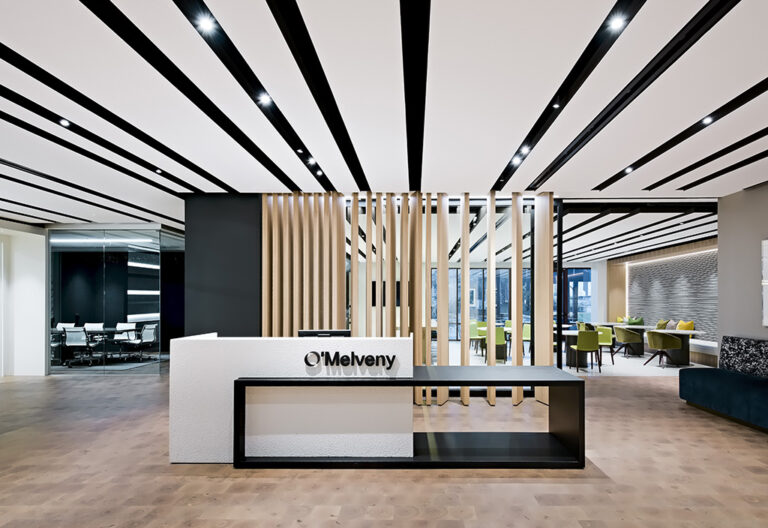
Written by Jennifer Taranto, VP of Sustainability, STO Building Group
There is a growing focus on environmental, social, and governance (ESG) issues in the built environment. From a company’s carbon footprint and waste management practices, to its interactions with its stakeholders and communities, to its internal policies, procedures, and decision-making processes, consumers are increasingly considering what a company stands for rather than simply what services it provides.
The legal industry is capitalizing on their unique opportunity to lead the way in addressing ESG concerns given their expertise in regulatory compliance, risk management, and corporate governance. And those values are coming to the forefront through their real estate portfolios.
Addition by Subtraction—The Sustainable Law Office
The real estate sector is responsible for 40% of global greenhouse gas emissions. That means that anything companies can do to reduce energy consumption and waste can make an impact, while also helping those companies meet carbon reduction goals. For example, firms can:
- pursue certifications, such as LEED or BREEAM, to set targets and standards
- leverage signing “green” leases to help align their landlords’ interests with their own and work together to meet sustainability goals in the built environment
- purchase green power that is certified and verified by an independent third party
- encourage their employees to adopt sustainable commuting practices, such as biking or taking public transportation

Many law firms have already put these initiatives into practice. For instance, Clifford Chance LLP has set ambitious sustainability goals: Its near-term, science-based target is to reduce absolute Scope 1 and 2 GHG emissions 80% by 2030 from an FY20 base year and to reduce absolute Scope 3 GHG emissions by 47% within the same timeframe, as well as stay focused on the highest level of sustainability, wellness measures, and operational efficiency across its global offices. More recently, business sustainability ratings company EcoVadis awarded Clifford Chance with a gold medal for its sustainability efforts in FY23, placing the firm in the top 5% of companies assessed by EcoVadis and top 2% of those firms assessed within the legal and accounting services sector. For its new office space that Structure Tone New York is building at Two Manhattan West, it is seeking LEED and WELL Platinum certifications and Fitwel Three Stars and, as part of the firm’s global sustainable procurement program, is working with local suppliers in the region to ensure the firm’s minimum standards are met.
“Placing sustainability at the core of our decision-making and understanding our environmental and social impact is important; it not only affects the firm and our people, but it also affects our clients and our suppliers,” says Grace McLaughlin Rainey, Director of Operations, Americas, for Clifford Chance. “We’ve considered each stage of our office design and fit-out and ensured we remain aligned to our responsible business commitments.”
The Social Network
Another area where law firms can make an impact is the “social” component of ESG—including not only focusing on but also improving diversity, equity, and inclusion (DEI) across the industry. How does that translate to the workplace?
- Identifying physical spaces for various styles, from more informal, communal areas to focus rooms and workstations.
- Accommodating flexible or hybrid employees with hoteling or desk reservation systems.
- Promoting socially and environmentally conscious commitments throughout the office, including the focus areas of employee resource groups, sustainable office features, and mass transit accessibility
An example is award-winning firm O’Melveny Myers LLC which boasts more than 30 Employee Resource Groups alongside their considerably high number of diverse employees in leadership roles throughout the firm on their policy committee, partner compensation committee, and partner admissions committee. The firm openly provides flexible work and support for parents through reduced schedules, remote work, or sabbaticals. Their understanding and promotion of awareness around DEI issues is reflected through training on implicit bias, bystander intervention, and antiracism. They further reinforce their commitments through pro bono work addressing systemic racial disparities such as voter suppression and police misconduct.
O’Melveny, also a member of the Law Firm Sustainability Network, is as keenly focused on their environmental efforts. Ten of their 18 offices worldwide are in LEED certified buildings. Four additional offices are in buildings that are certified by sustainability standards comparable to LEED, such as BREEAM. One of their newest offices, which Structure Tone Southwest is building in Dallas, will be located within the Harwood District with direct access to the Katy Trail to promote wellness. The firm also supports the use of mass transit, carpool, and bicycle commuting and their New York office uses 100% renewable energy.
Setting a Precedent
Given their area of expertise, law firms are perfectly suited to demonstrate a strong commitment to effective governance in their real estate. Establishing and communicating policies around environmental and social standards and behavior, for example, signals not only what the company stands for but also provides guardrails for what actions and principles they take action on.
Allen & Overy LLP, whom we have a longstanding relationship with, is doing this particularly well. The firm has established policies to manage environmental and social risks, including an environmental policy that sets out specific goals for reducing the firm’s carbon footprint while promoting sustainable practices and a modern slavery and human trafficking statement. The firm has an energy management policy statement and has committed to 100% renewable electricity for its UK offices by 2025.
These examples are not to say pushing the ESG envelope is easy. Challenges remain, particularly in real estate portfolios where implementing sustainable building practices, retrofitting existing buildings, and finding suitable locations that align with ESG values and meet the needs of the firm can be complex and costly.
Despite these challenges, law firms do recognize the importance of addressing ESG in the built environment. Among our clients across sectors, we’re seeing more and more law firms take on these commitments and, in doing so, begin to reduce their environmental impact, promote social equity, and ensure that their real estate is managed in an ethical and transparent manner. As ESG continues to be a priority for organizations around the world, law firms will continue to lead the way.
